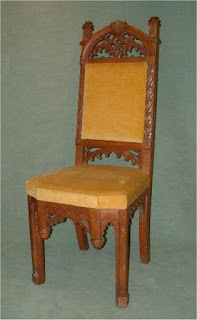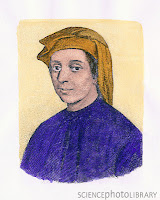Scholastic theology was a blend of two traditions: patristic learning (that is, writings from the fathers of the early church, such as Augustine), and the reasoning skills derived from reading the non-Christian thinkers such as Greek philosophers and Jewish scholars (which at this point were usually available because of Islamic scholars). The Scholastics were no longer content to shake their heads and simply accept apparent inconsistencies in the Bible. Their goal was to order and understand the entire world, and that meant first understanding the Bible.
 |
| 17th century edition of Anselm's Bible |
His other notable contribution to theology was at the university in Paris, which he co-founded with William of Champeaux. Here theologians promoted Realism, the philosophy that our reality is independent of our beliefs, perceptions, and language. For Realists, truth is understood as one learns of and conforms to reality.
Anselm of Laon became so well-known for his understanding of theology that, when he moved to Laon to start a school there, scholars traveled to study with him. One of these, Peter Abelard, would be expelled from the school by Anselm in 1113 after debates over the validity of Realism, but would go on to become, in his turn, one of the groundbreaking theologians of the next generation. Anselm, though not well known now, would have been happy to know that his glosses on the Bible were re-printed several times over the following centuries.
*Modern scholars think it more likely that the Glossa was compiled by Anselm's students after his death, using Anselm's lectures and (now lost) writings. This was one of two chief commentaries on the Bible. The other was the Glossa ordinaria of Walafrid Strabo (808-849).


































